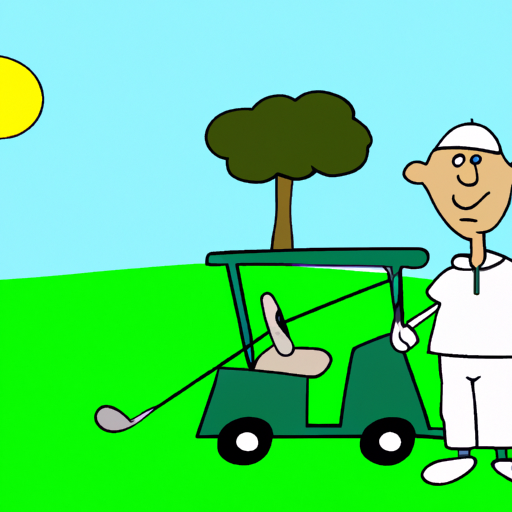- Home
- Moe Norman
- Single Plane Swing
Mastering the Single Plane Swing: A Comprehensive Guide for Weekend Golfers
Have you ever wondered if there's a simpler, more efficient way to swing your golf club? If you're like me, you're always on the lookout for techniques that can take your game to the next level. That's where the single plane swing comes in.
This method, popularized by golf greats like Jim Hardy and Moe Norman, is all about simplifying the swing motion to improve consistency and reduce stress on your body.
Now, you might be thinking, "What exactly is a single plane swing?" It's a good question, and one that I had myself when I first heard about this technique.
In essence, the single plane swing keeps the club on the same plane throughout the entire swing. This differs from the traditional swing, where the club moves on one plane during the backswing and another during the downswing. By keeping the club on a single plane, you can achieve a more consistent and efficient swing.
So, why should you care about the single plane swing? Well, if you're anything like me, you're always looking for ways to improve your game. And the single plane swing, with its focus on simplicity and consistency, can do just that.
It's particularly beneficial for seniors and golfers with bad backs, as it requires less body rotation. Plus, it can help improve your golf swing distance, making it a great technique for golfers looking to add some yards to their drives.
Are you ready to give the single plane swing a try?
I know it might seem daunting at first, but with practice and patience, you can master this technique and see real improvements in your game. Remember, every great golfer was once a beginner. With persistence and the right technique, you too can master the game.
So, let's get started on this golfing journey together!
 Master the single plane swing and elevate your golf game.
Master the single plane swing and elevate your golf game.Master the Single Plane Swing: Elevate Your Golf Game
Hello, fellow golfers!
If you're on the hunt for a new swing technique to elevate your game, you've landed in the right place.
Today, we're delving into the world of the single plane swing, a method that's been gaining popularity among golfers of all skill levels. This technique, which simplifies the swing motion and reduces stress on the body, could be the secret weapon you need to take your game to the next level.
But what exactly is it, and how can it improve your game?
What is a Single Plane Swing?
The single plane swing is a golf technique that aims to simplify the swing motion, reducing the stress on your body and potentially improving your game.
It was popularized by golfers like Jim Hardy and Moe Norman, who swore by its effectiveness. The concept behind the single plane swing is to keep the club on the same plane throughout the entire swing. This differs from the traditional swing, where the club moves on one plane during the backswing and another during the downswing.
By keeping the club on a single plane, golfers can achieve a more consistent and efficient swing. But what sets it apart from other swing techniques?
The Mechanics of a Single Plane Swing
Understanding the mechanics of the single plane swing is crucial to mastering it. Here's a step-by-step guide on how to perform it:
1. Setup: The setup is the foundation of the single plane swing. Stand further from the ball with your arms extended. This creates the single plane angle. Your arms and club should form a straight line that extends down to the ball.
2. Backswing: The backswing is where the single plane swing really differs from other swing techniques. Instead of lifting the club up and then around your body, you rotate your body while keeping the club on the same plane angle as in the setup. This requires less body rotation and reduces the chance of errors.
3. Downswing: The downswing in a single plane swing is a mirror image of the backswing. You maintain the same plane angle as you swing the club towards the ball, ensuring a consistent and efficient swing.
4. Impact: The moment of truth in any golf swing is the impact. In a single plane swing, you strike the ball while keeping your body and club aligned on the single plane. This leads to a more consistent and accurate shot.
Sounds simple, right?
But like any golf technique, it has its pros and cons.
Pros and Cons of a Single Plane Swing
Is a single plane swing better?
The answer depends on your personal golfing style and physical capabilities. The single plane swing is easier to repeat and puts less stress on the body, making it a great choice for golfers seeking a more comfortable swing technique.
However, it may take some time to master, especially if you're used to a different swing technique. On the flip side, some golfers find it difficult to generate as much power with a single plane swing as they can with a traditional swing.
It's important to weigh these pros and cons before deciding if the single plane swing is right for you.
Single Plane Swing vs. Two Plane Swing
Does Bryson DeChambeau use a single plane swing?
Yes, he does! And he's not the only one.
Many golfers are now choosing the single plane swing over the traditional two plane swing. The main difference between the two is the swing path.
A single plane swing maintains the same plane angle throughout the swing, while a two plane swing involves a shift in plane angle during the downswing. This can make the two plane swing more difficult to master, as it requires more coordination and timing.
However, some golfers find that they can generate more power with a two plane swing. It's all about finding the swing technique that works best for you.
Single Plane Swing for Different Golfers
Did Ben Hogan use a single plane swing?
No, he didn't. But that doesn't mean it's not beneficial for other golfers.
In fact, the single plane swing can be particularly beneficial for seniors and golfers with bad backs, as it requires less body rotation. It can also help improve golf swing distance, making it a great technique for golfers looking to add some yards to their drives.
But remember, every golfer is unique. What works for one golfer may not work for another. It's important to experiment with different swing techniques and find the one that suits you best.
 A golfer perfecting his single plane swing.
A golfer perfecting his single plane swing.How to Improve Your Single Plane Swing
Now that we've covered the basics, it's time to dive into some tips and drills to help you master the single plane swing:
1. Practice your setup: Spend time perfecting your setup position. This is crucial for a successful single plane swing. Make sure your arms and club form a straight line and that you're standing the correct distance from the ball.
2. Work on your backswing and downswing: Practice maintaining the same plane angle throughout your swing. This can be challenging at first, but with practice, it will become second nature.
3. Use training aids: There are many training aids available that can help you master the single plane swing. These can provide immediate feedback and help you make necessary adjustments to your swing.
4. Be patient: Mastering the single plane swing takes time and patience. Don't be discouraged if you don't see immediate results. Keep practicing and you'll see improvement over time.
Conclusion
The single plane swing is a powerful tool in any golfer's arsenal. With its simplicity and potential for improved consistency, it's no wonder more and more golfers are giving it a try.
Remember, mastering a new swing technique takes time and patience, so don't be discouraged if you don't get it right away. Keep practicing, and you'll be hitting those long, straight drives in no time!
Key Takeaways
1. The single plane swing is a golf technique that simplifies the swing motion, reducing stress on the body.
2. It's a great choice for golfers of all skill levels, including seniors and those with bad backs.
3. Mastering the single plane swing requires practice and patience, but the potential benefits are worth it.
So, are you ready to give the single plane swing a try?
Remember, every great golfer was once a beginner. With persistence and the right technique, you too can master the game.
Onward, fellow golfers! Let's conquer the course, one swing at a time.
FAQs on Single Plane Swing
Is single plane swing better?
Is single plane swing better?
The single plane swing can be better for some golfers as it simplifies the golf swing by reducing the number of moving parts. This can lead to more consistent ball striking and less strain on the body. However, it may not suit everyone's natural swing or body type.
Does Bryson DeChambeau use single plane swing?
Does Bryson DeChambeau use single plane swing?
Yes, Bryson DeChambeau is a well-known proponent of the single plane swing. He has tailored his clubs and swing to adhere to this method, which he believes contributes to his success on the course.
Did Ben Hogan use a single plane swing?
Did Ben Hogan use a single plane swing?
No, Ben Hogan did not use a single plane swing. His swing was unique and has been widely studied. While some elements may resemble a single plane swing, it was not a pure single plane swing as we understand it today.
What is a one plane swing vs two plane swing?
What is a one plane swing vs two plane swing?
A one plane swing, or single plane swing, is when the club follows the same path on the backswing and downswing. In a two plane swing, the club travels on one plane during the backswing and a different plane during the downswing.
What is the benefit of a single plane swing?
What is the benefit of a single plane swing?
The main benefit of a single plane swing is its simplicity. By reducing the number of moving parts, it can lead to more consistent ball striking. It also tends to be easier on the body, which can be beneficial for golfers with physical limitations.
How do I transition to a single plane swing?
How do I transition to a single plane swing?
Transitioning to a single plane swing involves changes to your setup, backswing, and downswing. It's recommended to work with a golf instructor familiar with the single plane swing to ensure proper technique and avoid developing bad habits.








